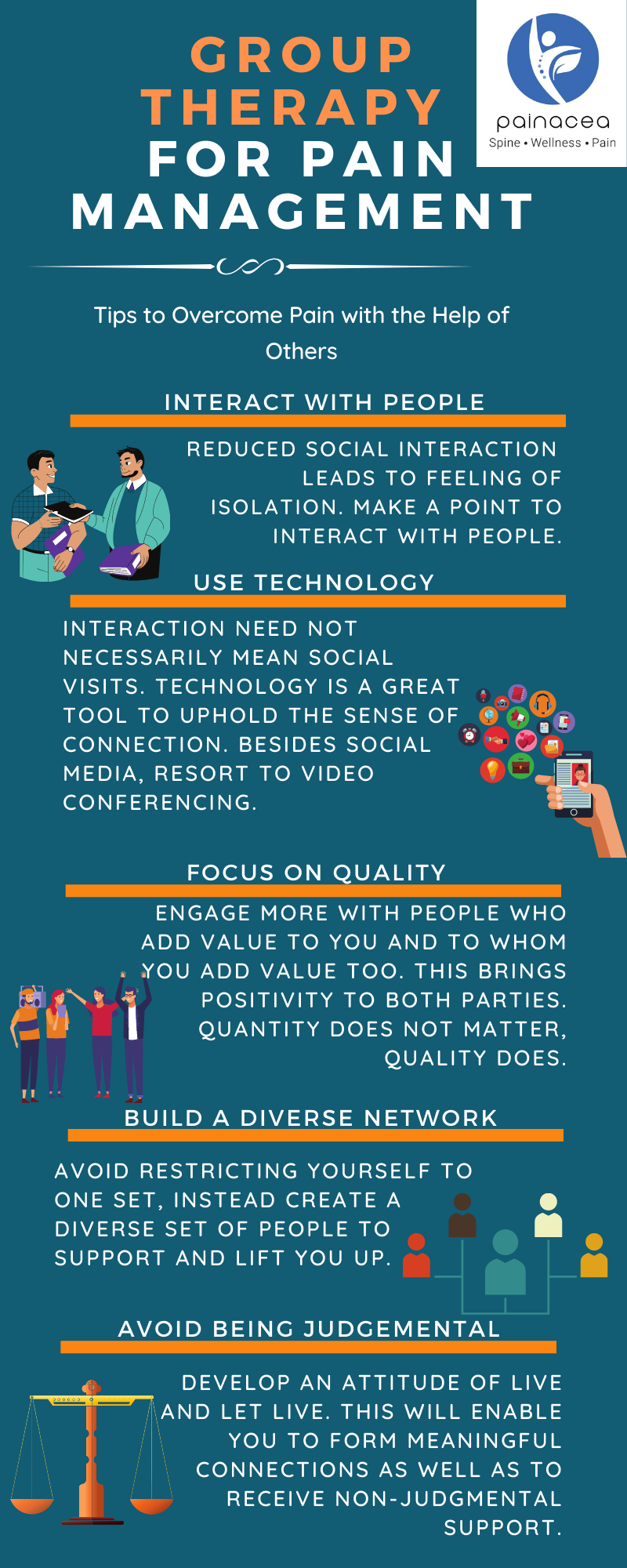Group Therapy for Pain Management: Does It Really Work?
- Monica Pandey

- Jul 7, 2021
- 4 min read

What is group therapy? Have you heard of this term? A relatively lesser known therapy especially in the Indian context, group therapy owes its existence to the fact that man, by nature, cannot isolate. We are social animals, so if we are fighting an illness, why fight alone? The aim of this article is to help you understand better the concept of group therapy and how it helps when applied to chronic pain patients.
Commonly, substance abuse is what is associated with group therapy, but if we trace the history, it is Dr Joseph Hersey Pratt who first introduced the concept while treating a small group of eight patients suffering from tuberculosis, in Greater Boston, in the year 1905. As people feared tuberculosis, these patients were isolated from the rest, leading to experience of negative emotional states. Dr Pratt brought these patients together and enabled them to discuss commonly felt problems. He reported enhanced emotional states and positive results. This is the first known formally organized therapy group. Ever since then, he is known as the Father of Group Therapy.
After that, several research studies have been conducted to establish the efficacy of group therapy. In February 2020, Barowski et al published a paper on the efficacy of group psychotherapy on anxiety disorders. It was a meta-analysis of 57 eligible studies. The findings are in support of group psychotherapy.
Controlled research studies evaluating the efficacy of group therapy interventions have been conducted with patients suffering from low back pain (Basler, Jaekle, & Kroener-Herwig, 1997; Newton-John, Spence, &Schotte, 1995; Nicholas, Wilson, & Goyen, 1991; Turner & Jensen, 1993), rheumatoidarthritis (Bradley et al., 1987; Parker et al., 1988), osteoarthritis (Keefe et al., 1990), and facial pain (Harrison, Watson, & Feinmann, 1997). These studies have demonstrated that group therapy can significantly reduce pain and improve the psychological and physical functioning of many patients with chronic pain.
Group therapy is very well known for reducing isolation and increasing adherence to medication. These sessions also serve as patient educational groups and social support groups. They impart coping skills and enable learning from each other. Group therapy functions on specific principles, such as hope, universality of experience, catharsis, existentialism, interpersonal learning, among others, as postulated by Dr Yalom. Thus, there are several advantages to group therapy. First of all, it is a very affordable and cost-effective way of receiving professional and peer support. It reduces the feeling of isolation and amplifies the feeling of connection. These sessions become a platform to give as well as receive support from similar others. This is especially relevant to patients of chronic pain, as typically, socialization takes a back seat in chronic pain patients. In different situations, different patients serve as models for the others. This modeling enables learning from each other. Group therapy serves as a safe, non-judgmental space to share experiences.
Typically, these sessions take place in a quiet setting, where chairs are arranged in a wide circle, so that every member is visible to every other. However, online group sessions too can be conducted via the video format. The key factor is a professional therapist who is qualified to act as a moderator and leader to conduct these sessions. Such a professional is the binding agent and plays the primary role of establishing the objective, setting the context, generating awareness, increasing support, providing coping skills and reducing stress levels with the use of activities, relevant topics and insightful summations.
All in all group psychotherapy is an excellent tool to help you deal with the chronic pain you are enduring. To sum up in the words of Robert Greene, “We are a social animal, power only exists in a social sense, we have to work in groups.”
So, while you consider and reflect upon this article and decide when to book your seat for a group therapy session, here are some behavioral quick tips for you to start practicing.

Interact with people – One of most common effects of chronic pain is the reduced social interaction. This leads to feeling of isolation. Make a point to interact with people.
Use technology – Interaction need not necessarily mean social visits. Technology is a great tool to uphold the sense of connection. Besides social media, resort to video conferencing. Receiving visual inputs boosts the connection, so engage more in video calls.
Focus on Quality – Engage more with people who add value to you and to whom you add value too. This brings positivity to both parties. Quantity does not matter, quality does.
Build a diverse network –Avoid restricting yourself to one set, instead create a diverse set of people to support and lift you up.
Avoid being judgemental – Develop an attitude of live and let live. This will enable you to form meaningful connections as well as to receive non-judgmental support.
Try these easy tips. While these will help you greatly, do consider a social support in the form of group therapy! Remember, you are not alone, and the only way to feel “not alone” is to connect with similar others, so REACH OUT!
I leave you with that thought and welcome your comments on the same.




Comments